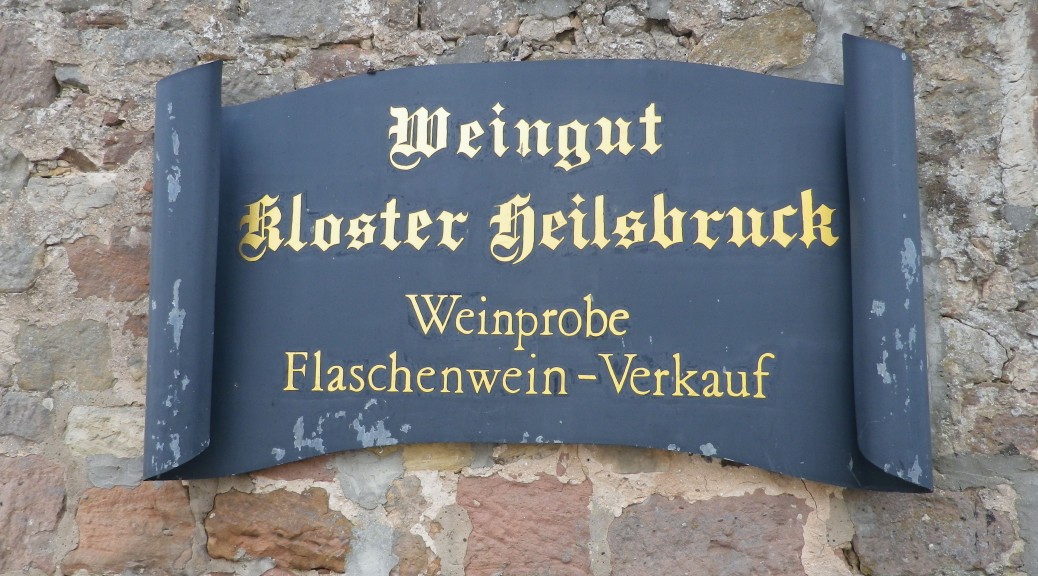What I Learned
The Rhineland Palatinate’s Suedliche Weinstrasse (Southern Wine Route) has a long-documented history of wine-making. Grapes were cultivated and processed into wine even in the early days of Roman settlement along the Rhine. The implements found throughout various sites in this part of the Pfalz, (the German name for Palatinate), some of which are in the wine museum in Edenkoben, bear witness to this long and continuous history.
The wine-making traditions revitalized with the establishment of regional monasteries, such as the one in Wissembourg dating to the 600s. Vineyards around the area of Edesheim were acquired by and worked for this monastery. They built the first version of the Edesheim Castle, today known as Schloss Edesheim. Another cloister, Heilsbruck, was founded in the 1260s in Edenkoben. Today, while the religious community is no longer there, the site itself remains dedicated to wine-making, still using the vineyards and some of the old cloister buildings.
Some of the better known vineyards include the Ordensgut, between Hainfeld and Edesheim; the Trappenberg in Freimersheim (just east of Edesheim); and the Herrenbuckel in Flemlingen, south of Hainfeld.
Riesling has always played an important role, especially in the northern part of this region. Mueller Thurgau is also an important white varietal, especially in the south. Weissburgunder (Pinot Blanc) is another white wine grape that is planted here, although in far smaller quantities. As for the red varietals, there is Dornfelder, the most widely cultivated red wine grape locally. As a percentage of red wine grapes grown, it has overtaken the traditional favorite: Portugieser. Spaetburgunder, aka Pinot Noir, represents a full 7% of the grapes planted, and is gaining in popularity.
What I Tasted
2013 Riesling, Himmlisch, Trocken, Ernst Minges, (Edesheim): A dry white wine with medium gold color; green apples and grape on the nose; tastes fruity with a mouth-watering tartness, but well-balanced overall.
2013 Gewuerztraminer, Flemlinger Herrenbuckel, Spaetlese, Deutsche Praedikatswein, Weingut Lutz (Hainfeld): A dry white wine with medium gold color; floral nose; honey, rose and candied orange flavors; smooth with just a hint of acidity.
2012 Auxerrois, Feinherb, Kabinett, Weingut Nicole Graeber, (Edenkoben): An off-dry white wine, very smooth with mild acidity; fuller bodied than many local German white wines; nice fruity bouquet, followed by citrus flavors; a nice depth of flavor overall.
2011 Cuvee Abendrot, Weingut Kloster Heilsbruck, (Edenkoben): A dry red wine with medium red color; a very pleasant blend of local reds, drier and fuller bodied than most German red wines. Hints of red berries and a bit of spice. As the name suggests, this red is a pleasant sipping wine for evenings.
2011 Dornfelder, Edenkobener Schloss Ludwigshoehe, Weingut Teutsch (Edenkoben): A dry red wine, with predominately cherry flavors, medium bodied, with medium tannins and a smooth finish.
